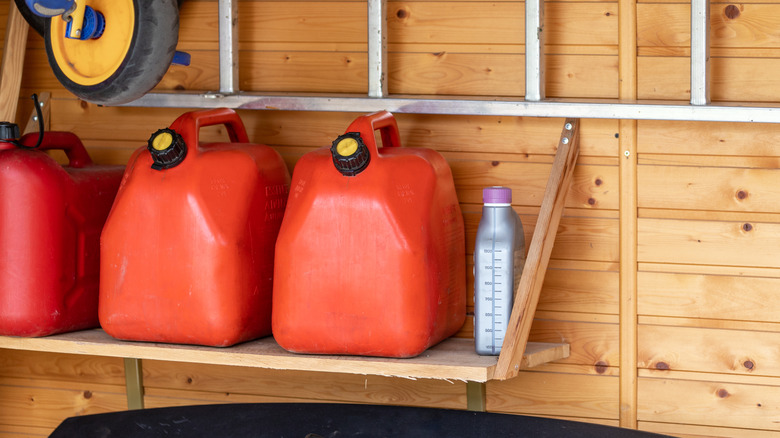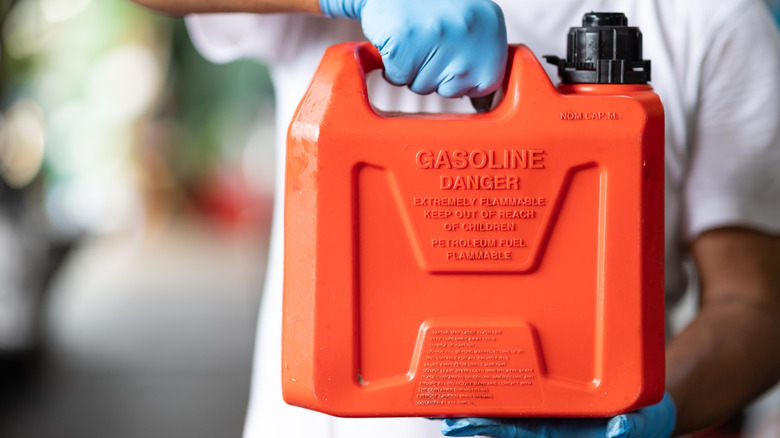Has The Gas Can In Your Garage Ever Shrank Or Swelled? Here's Why It Happens
Handling gas requires a high level of caution. While you, of course, want to prevent spills when putting gas in your lawn mower, power washer, or any other equipment, you also need to consider the way it's stored when not in use. Most homeowners use a gas can made of plastic, which is perfectly safe, but this type of vessel can easily become distorted due to temperature changes and pose a potential hazard.
The cause for the container's shrinking and swelling comes down to science. Gasoline is a highly volatile material that is quick to evaporate as temperatures rise. As it does so, the newly formed vapor increases the pressure inside the container. With the cap on, this added pressure is unable to escape and causes the container to puff up or swell. This is potentially dangerous, since the swelling can cause the canister to crack and leak. Conversely, when the temperature outside drops, so does the pressure exerted by the vapor inside the gas can. Once this drops below the level of ambient pressure that's naturally pushing on the outside of the can, the container shrinks or collapses inward. If you spot a distorted container, there's a simple way to restore it to its original shape and mitigate future shrinkage and swelling.
How to handle (and prevent) distorted gas cans
If your gas can has puffed up, unscrew the cap slowly to release the excess pressure. The container should quickly return to its original size, after which time you can close it again. On the other hand, if it shrank, follow the two steps above, then place the newly sealed container in direct sunlight for up to two hours to help it regain its full shape. In both cases, make sure you're in an open space with good ventilation (ideally outdoors) and far away from any heat sources that could cause the vapor to catch fire. Also, never place the can on a metal surface, as this could cause sparks to fly.
Once finished, check to make sure there are no cracks in the plastic. If you spot any, safely dispose of the old gas and chuck the can, since a faulty container can leak and pose a serious fire hazard. As for where to actually place your fuel can, while there are some things you should never store in your garage, it is safe for gas containers. A shed would also be acceptable, just be sure to choose a spot that's off the ground and far from sunlight and drafts, so the temperature remains as stable as possible.
Another great tip to remember is to never fill the can to the very top to help decrease pressure. Alternatively, you could also switch to a metal gas can that's more durable and less impacted by temperature fluctuations. If you stick with plastic, though, replace the container every 5 to 7 years.

